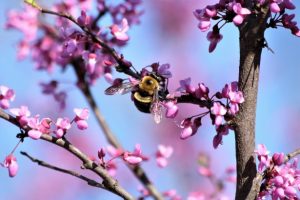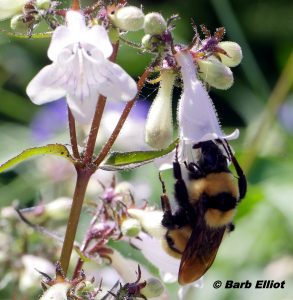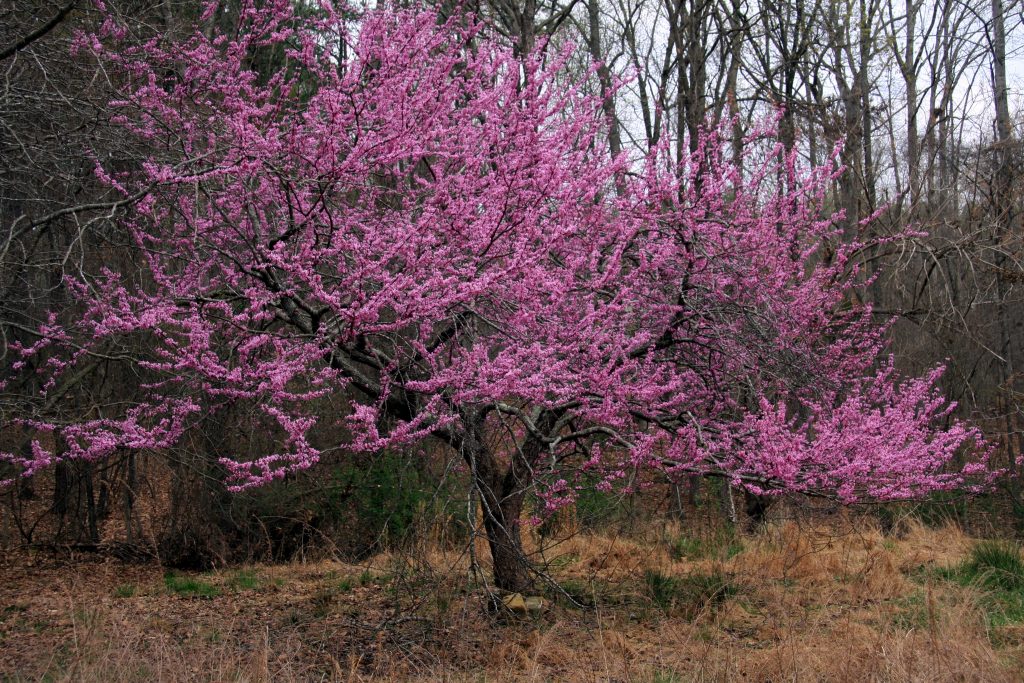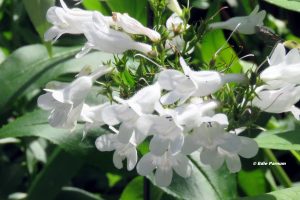By Edie Parnum
Every year we feature two superior native plant species. One of the Prime Plants for Nature is a tree, shrub, or vine and the other is a perennial. Prime Plants are selected based on these criteria:
- Native to southeastern Pennsylvania
- Offer high wildlife value and contribute significantly to your property’s web of life
- Provide food for wildlife by producing nutritious fruits, seeds, nuts, nectar, or pollen
- Usually host insects that are eaten by birds or other animals
- Offer shelter and places to raise young
- Are easy to grow and make attractive additions to your landscape
- Sold at native plant nurseries and native plant sales. (See below for a list of local sources of native plants during the Coronavirus shutdown.)
Our selections for the 2020 Prime Plants for Nature awards are:
Cercis canadensis, Eastern Redbud
Wildlife Value: To support bees and other pollinators, we usually think of perennials. However, some trees, particularly Eastern Redbud, produce a

Carpenter Bee collecting pollen from Eastern Redbud flowers. Photo from Tufts Pollinatore Initiative & Wikimedia Commons. click to enlarge.
massive number of spring blossoms for early season pollinators. The nectar-rich flowers attract numerous bees, butterflies, and sometimes hummingbirds at a critical time when other flower resources are limited. Medium-sized native bees such as Mining, Cellophane, Carpenter, Mason, Bumble Bees and others can pollinate by pushing down the lower petals of the blossoms.
Redbud’s foliage is a host for the Henry’s Elfin butterfly, Io Moth, White Flannel Moth and a few other moth species.
Growing Conditions: Redbud is easily grown in sun or part shade. It tolerates a wide variety of soil conditions, moist to dry, and is normally free of insect pests or diseases. Most yards have enough space for planting this small tree.
Appearance: When in bloom Eastern Redbud is spectacularly beautiful. In early spring before the leaves emerge, all the branches are covered with magenta flowers. A graceful, vase-shaped deciduous tree with spreading branches, it grows to 15-30 feet at maturity.
Penstemon digitalis, White Beardtongue
Wildlife Value: White Beardtongue is an important source of nectar and pollen for a

Nectar guides on the left blossom signal the direction to nectar and pollen. The Bumble Bee on the right has reached the nectar and pollen. © Barb Elliot. Click to enlarge.
variety of pollinators. Long-tongued native bees including bumble bees, digger, miner, mason, and small carpenter bees are important pollinators of beardtongue. Butterflies, sphinx moths, and hummingbirds are less important pollinators. The White Beardtongue’s flower petals have nectar guides (see photo). These direct bees and butterflies to the nectar and pollen buried in the center of the flower.
Growing Conditions: Beardtongue will grow well in sun or part sun in dry to medium soil. Seedlings are shallow-rooted and can be transplanted easily or given to gardening friends. This perennial isn’t usually appealing to deer. When purchasing beardtongue or other perennials, be sure the plants are not treated with neonics (neonicotinoids), a systemic pesticide that is toxic to bees and any other insects using the plant’s resources.
Appearance: The white or pale pink blossoms of White Beardtongue are shaped as a tube with two lips. Blooming occurs from April to June on 3-5-foot erect stems that rarely flop. The flowers are attractive, and some individuals use them in flower arrangements.
Local Sources of Native Plants During Coronavirus Shutdown
Collins Nursery, 773 Roslyn Avenue, Glenside, PA 19038. 215-715-3439 or www.collinsnursery.com . Order at info@collinsnursery.com for curbside pick-up.
Edge of the Woods Nursery, 2415 Route 100, Orefield, PA 18069. 610-393-2570 or www.edgeofthewoodsnursery.com .Order online and pick-up by appointment. For questions about plants, schedule a phone call.
Gateway Garden Center, 7277 Lancaster Pike, Hockessin, DE 19707. 302-239-2727 or www.gatewaygardens.com . Open and considered a Delaware essential business.
Gino’s Nursery, 2237 Second Street Pike, Newtown, PA 18940. 267-750-9042 or www.ginosnursery.com . Call or email sales@ginosnursery.com to order. Curbside pick-up or delivery within 12-mile radius.
Good Host Plants, 150 W. Butler Street, Philadelphia, PA 19140. 267-270-5036 or www.goodhostplants.com Email info@goodhostplants.com to order for curbside pickup in the West Mt. Airy section of Philadelphia or delivery within a 5- mile radius.
Northeast Native Perennials, 1716 E. Sawmill Road, Quakertown, PA18951. 215-901-5552 or www.nenativesandperennials.com . Call or email northeastnativeperennials@gmail.com to order for curbside pick-up.
Redbud Native Plant Nursery, 904 N. Providence Road, Media, PA. 19063. 610-892-2833 or www.redbudnative.com . Call or email info@redbudnative.com to order for curbside pick-up. .
Yellow Springs Farm, 1165 Yellow Springs Road, Chester Springs, PA 19425. 610-827-2014 or www.yellowspringsfarm.com .Order on-line or by phone for mail order or farm pick-up. Free shipping for orders over $100.



